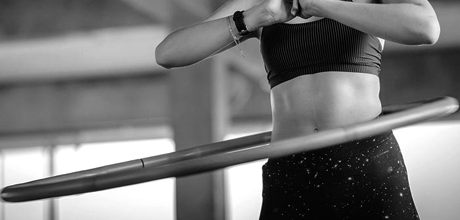
By creating a fitness routine you provide yourself with a structured approach to gaining and then maintaining a strong, healthy body and a strong healthy mind.
You may not be an elite athlete who is supported by a whole lot of other professionals (trainers, nutritionists, physiotherapists, etc) but that doesn’t mean you can’t benefit from the same smart system that helps them maintain their focus.
So, what is it you need to put together?
1. Visualisation
The power of the mind to affect fitness is undeniable. New studies show that by visualising our self performing a specific physical activity we are priming our brain and body to do it. What’s more we prime our self to do it well even when we don’t really feel like it.
The power of visualisation to help us overcome obstacles is so well documented that there are now studies on how it can be used in sports rehabilitation to help overcome sports-related injuries faster.
Visualisation or mental role playing helps the brain allocate attention. This changes the way mental resources are apportioned and focus is directed. The brain is absorbed in the role that’s visualised and many of the obstacles that prevent us from exercising, such as tiredness, stress, lack of organization, are diminished in our perception and removed.
2. Focus
Exercise is the means through which we reprogram the body and brain. Even a single session of physical exercise affects our memory and improves our ability to learn. Sustained exercise helps the brain create thicker, better connections that lead to improved cognitive function.
In order to do this in the first instance, we need to be able to focus on something that is important to us. Something that will get us moving even on days when we don’t want to.
The trick is to find a way to activate the brain’s reward system so that a dopamine spike is experienced each time, which leads to associating exercise with a pleasurable sensation and some anticipation.
In order to achieve this, you can keep track of exercise with a fitness tracker or a diary of workouts done, work on a monthly challenge where each day is crossed out, work towards a realistic and specific goal such as improving the number of push-ups you can do, or the distance you can run or the length of time you can exercise.
These are goals which provide a focus. To be able to use this to motivate our self even when we feel tired, low and dispirited we must have a clear target that is achievable, a finite period of time to achieve it in providing us with an end in sight and a clear means of recording it all in a way that shows progression towards our goal. Use whatever works easiest for you, as long as it motivates you to keep on going.
3. Variety
The next element we need is a means of maximising the benefits of the time we invest in exercise. Because we haven’t got hours and hours to waste we need to be able to get the most from whatever time we put in.
The best way we can do that is by providing our muscles with a mixed bag of exercises each time. That way the body doesn’t optimise its fitness routines, we stay fresh and motivated as boredom doesn’t get the chance to set in and we see fitness and health benefits much faster.
By choosing a variety of workouts, changing up and even sometimes changing down the tempo of our exercise routines and also trying various types of exercises, we ensure that the stimulus to which the body responds with adaptations, remains fresh and challenging.
4. Nutrition
Food is fuel. The quality of the fuel we ingest determines how quickly out body responds to the physical, mental and psychological demands being made of it.
Research shows that there is a direct link between building strength and a diet that supports it. There is also a direct link between what we eat, long-term and how it affects bone strength which, in turn, affects the health of our brain.
Most of us are locked into some type of eating routine because we like it, we find it easy to use and we are accustomed to it. By experimenting with healthier options and small reductions in the ingestion of food stuffs like unsaturated fats and sugar that we know are harmful to us we can deliver small, consistent boosts to our fitness and overall health.
5. Support
Sustaining a weight-loss or health and fitness drive, entirely on our own soon depletes our mental and physical resources and makes it hard for us to stick to it. And this can lead to failure.
This is where emotional support really helps. Studies have shown that weight-loss and fitness routines undertaken in a virtual or real-world community setting deliver better results by helping the participants stick to what they are doing when they feel low.
Studies show that those who workout with others have a high success rate, benefitting from the added motivational boost that a friend, a family member, or trainer can add to their fitness routine.
